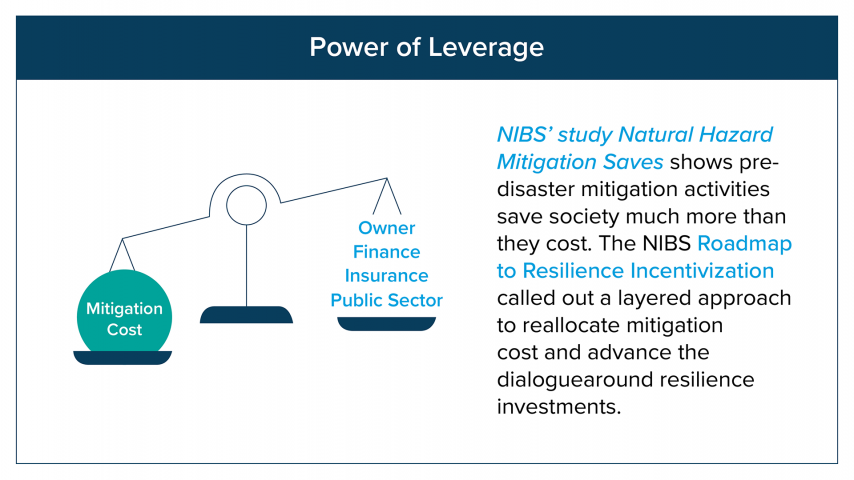
With wildfires in the West, hurricanes in the Southeast, tornados in the nation’s midsection, and flooding endemic to the entire nation, disasters have become all too common in the United States. Hundreds of lives and hundreds of millions of dollars are lost each year as a result. We must stop the build/rebuild cycle and instead take actions to reduce the human and financial impacts of disasters before they occur. With losses mounting, there is no time to waste. To address the nation’s mounting disaster costs, communities, governments, and the private sector should invest, and more importantly, incentivize resilient construction.
The National Institute of Building Sciences study Natural Hazard Mitigation Saves shows that many pre-disaster mitigation activities save much more than they cost. For example, hazard mitigation grants made by Federal Emergency Management Agency (FEMA), Economic Development Administration (EDA), and Department of Housing and Urban Development (HUD) save $6 per $1 spent; adopting the latest building code requirements saves $11 per $1 invested; and even for expensive building retrofits (it is always more cost effective to do it right in the first place for new buildings), the benefits still overweigh the cost, saving $4 per $1 invested.
However, the nation has invested far less in mitigation investments than seems to be warranted. Why? Because of the varied and sometimes competing interests of those in the supply chain – developers, owners, tenants, insurers, lenders, and communities. For example, if an owner pays extra to make a building resilient, other stakeholders may enjoy “free” co-benefits resulting from the lower losses on the property. Where one bears the costs while others enjoy most of the benefits, market forces are unlikely produce resilient buildings.
For its part, the federal government has stepped up its efforts, with recent initiatives such as FEMA’s Building Resilient Infrastructure and Communities hazard mitigation program. But despite these efforts, we know that it will not be enough to close the national gap in resilient buildings. So how can we ensure that society as a whole both makes the needed investments and shares in the benefits?
The Committee on Finance, Insurance and Real Estate (CFIRE) is a forum within the Multi-Hazard Mitigation Council (MMC) that examines the intersection of finance, insurance, investment and design, construction and ownership to encourage the development and assist in the affordability of high-performance buildings. In 2020, CFIRE published A Roadmap to Resilience Incentivization that calls for public and private incentives for owners of buildings and other infrastructure to facilitate the upgrade of existing structures and better design of new ones. We subsequently issued an industry call for incentivizing more resilient buildings and advocated for a collaborative approach by establishing a forum to unite the strengths of industry partners through strategic collaboration across the building science, finance, insurance and real estate industries.
CFIRE has formed a national Steering Committee with leaders including:
Daniel Kaniewski (Chair), Marsh McLennan
Timothy Judge, Fannie Mae
Michael Newman, IBHS
James Park, Appraisal Subcommittee
Cassandra Skidanov, Freddie Mac
Pamela Williams, IEM
Jamie Woodwell, Mortgage Bankers Association
Jiqiu (JQ) Yuan, NIBS
Armed with evidence that hazard mitigation saves lives and money, we are promoting a cooperative process and open dialogue among different parties to understand the gaps, share resources, develop tools, prioritize investment, and seek opportunities for innovation and inter-sector collaboration. By working together, we can achieve our vision of a more resilient nation.




